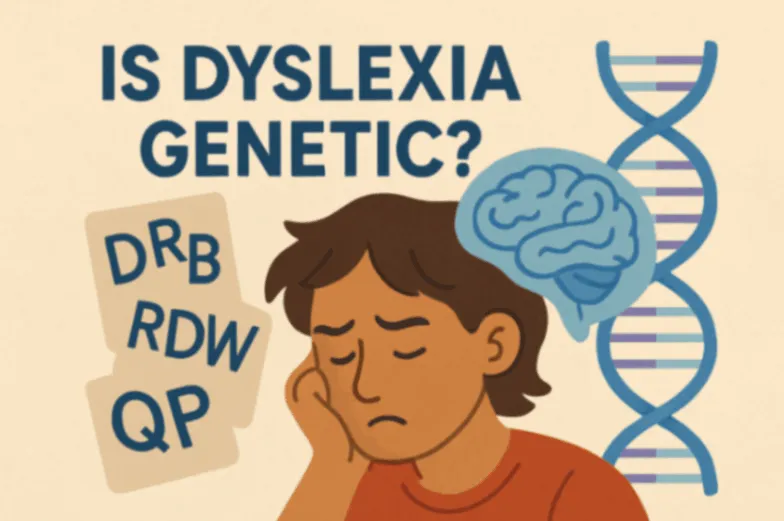Parents with a child newly diagnosed with autism commonly ask about the most effective course of action and when to intervene. Stem cell therapy for autism is an innovative treatment, hoping to lower brain inflammation and increase neural connections. However, determining the optimal timing for this treatment requires careful consideration of developmental stages, individual needs, and clinical factors. Knowing when to look for stem cell treatment for autism makes a big difference in the results of your treatments.
Early Childhood (Ages 2-6): The Critical Window
From the age of 2 to 6 is crucial for treating autism. It's in these years that the brain demonstrates remarkable neuroplasticity - eager to form new neural connections and adapt to changes. This kind of plasticity also means the infant brain is highly responsive to interventions, which can provide a window for therapeutic intervention in early life.
It is in this age group that children start to show the first clear signs of autism, including delayed speech development, reduced social interaction and repetitive behaviours. The brain inflammation processes of the brain that are causing autism symptoms are at their highest rates during this period, so it is a great time to look at anti-inflammatory treatments such as stem cell therapy for autism.
Some research suggests that mesenchymal stem cells could be especially potent in these early years since their anti-inflammatory properties might mute brainwide inflammation at a time when neural pathways are still being laid down. Its nerve cell regeneration-promoting ability would be very advantageous in this crucial time of growth.
Middle Childhood (Ages 7-12): Building on Foundations
Children aged 7 to 12 have already established many basic neural pathways, but their brains remain highly adaptable. It’s so much easier to reprogram it at that age than it is a few years down the line, even. There are a lot of new problems being faced by the students at this age, as their academic as well as their social commitments tend to increase. Many children with autism struggle with classroom environments, peer relationships, and more complex communication requirements.
Stem cell treatment for autism clinic examinations at this point target the control of chronic inflammation and promote cognitive growth. While the brain may not be as plastic as it was in childhood, significant advances in neural connectivity are still possible. The therapy could help children better manage sensory processing issues and improve their ability to focus on learning tasks.
Interventions during middle childhood are often designed to increase the effectiveness of other treatments, such as behavior therapy or educational assistance. The anti-inflammatory capacities of stem cells can also help create a better healing environment for these traditional therapies to be more effective.
Adolescence and Beyond (Ages 13+): Addressing Ongoing Challenges
Teenagers and young adults with autism need to overcome additional obstacles as they grow into independence, deal with social complexities and think about the future. The brain is less plastic during these years, but it’s still capable of a good response to stem cell therapy for autism.
As they grow aware of their differences, adolescents often suffer heightened anxiety, depression and behavioral struggles. The immune-modulating effects of stem cell therapy may have other positive effects that can reduce some of the neuroinflammation, which is responsible for these secondary symptoms.
In older peopletreatment goals may focus more on improving quality of life, reducing challenging behaviors, and supporting independent living skills rather than addressing core developmental delays.
Factors Influencing Optimal Timing
1. Severity of Symptoms
The severity of symptoms is a key determinant of treatment timing. Earlier intervention may also be necessary for children who present with more severe communication delays, aggressive behaviors or very low cognitive abilities. Nevertheless, the method of treatment at a stem cell clinic for autism must always be personalized after a comprehensive evaluation.
2. Presence of Medical Comorbidities
Children with autism often have additional medical conditions such as gastrointestinal (GI) disorders, immune deficiencies, and seizures. Such comorbidities may affect when and how fast stem cell therapy is administered. They may have to address their already existing medical concerns before they can go for regenerative treatment.
3. Family Readiness and Support
Good treatment results rely on strong family support and a willingness to engage in therapy. Parents have to be ready to implement the protocols and support their kids from diagnosis through treatment.
The Science Behind Timing
Mesenchymal stem cells derived from umbilical cord sources work through several mechanisms that may be more effective at different developmental stages. These cells release growth factors and anti-inflammatory compounds that seem capable of repairing acutely injured neural tissue and tempering brain inflammation.
Perhaps, the paracrine effects of stem cells — their impact on nearby cells through chemical signaling — are most effective when the brain is busy forming new connections. This is a reality of biology that underscores the need for treatment when early on, if it is possible.
Treatment Considerations for Each Age Group
1. Preparation and Evaluation
Regardless of age, all patients undergo a comprehensive evaluation by pediatric neurology experts before treatment. This evaluation assesses the subject's specific requirements (according to health condition and past medical history) and an assessment of his or her ability to take advantage of stem cell treatment.
2. Treatment Protocols
The actual administration of stem cells involves precise delivery to affected brain areas. The safety is consistent for all age groups, and the side effects are none when performed by expert medical professionals.
3. Post-Treatment Support
Careful management and observation are needed for a successful treatment. Younger children might not require as many support strategies as teenagers and adults. Nonetheless, follow-up evaluations are required for all age groups.
Taking the Next Step
A qualified doctor who can recognize your particular child's specific needs would help you decide when to begin stem cell treatment for autism. The sooner the better, but everyone of any age can develop significantly with the right treatment.
If you’re considering this state-of-the-art program of treatment, make an appointment for a complete evaluation from the experts who will provide guidance tailored to your child’s unique situation. The earlier you explore your options, the more prepared you’ll be to make choices about how and where your child will receive treatment.
Reviewed by






